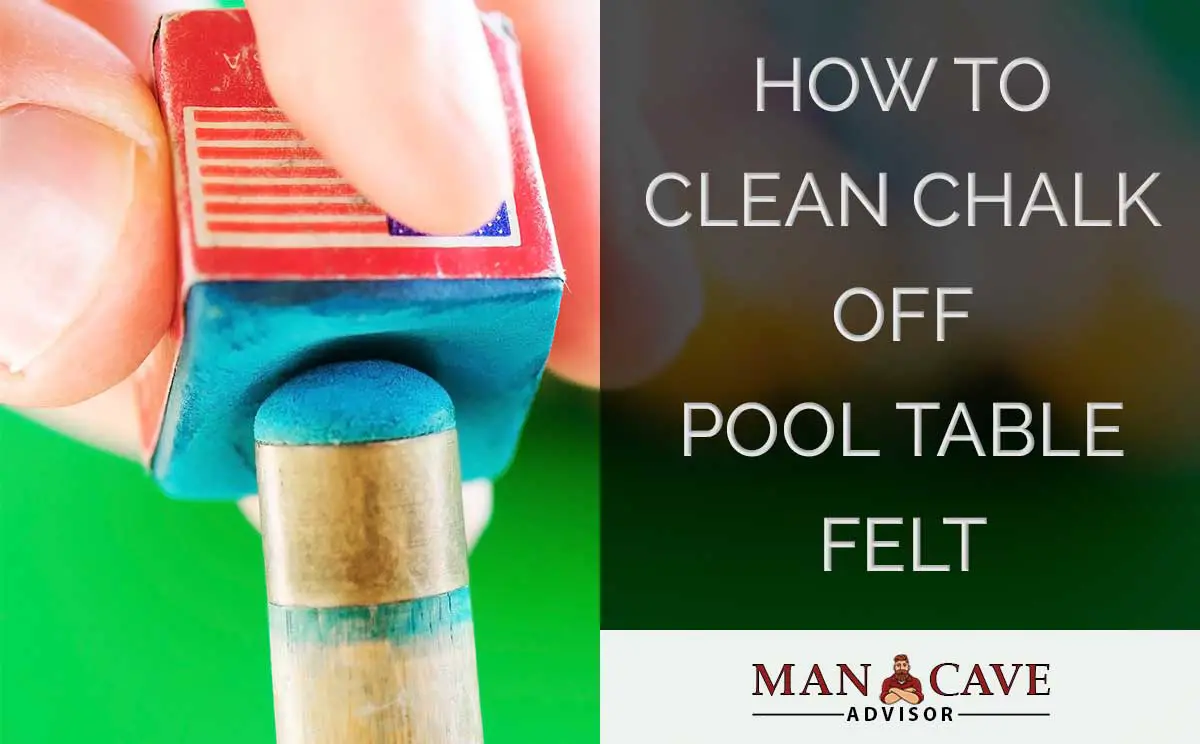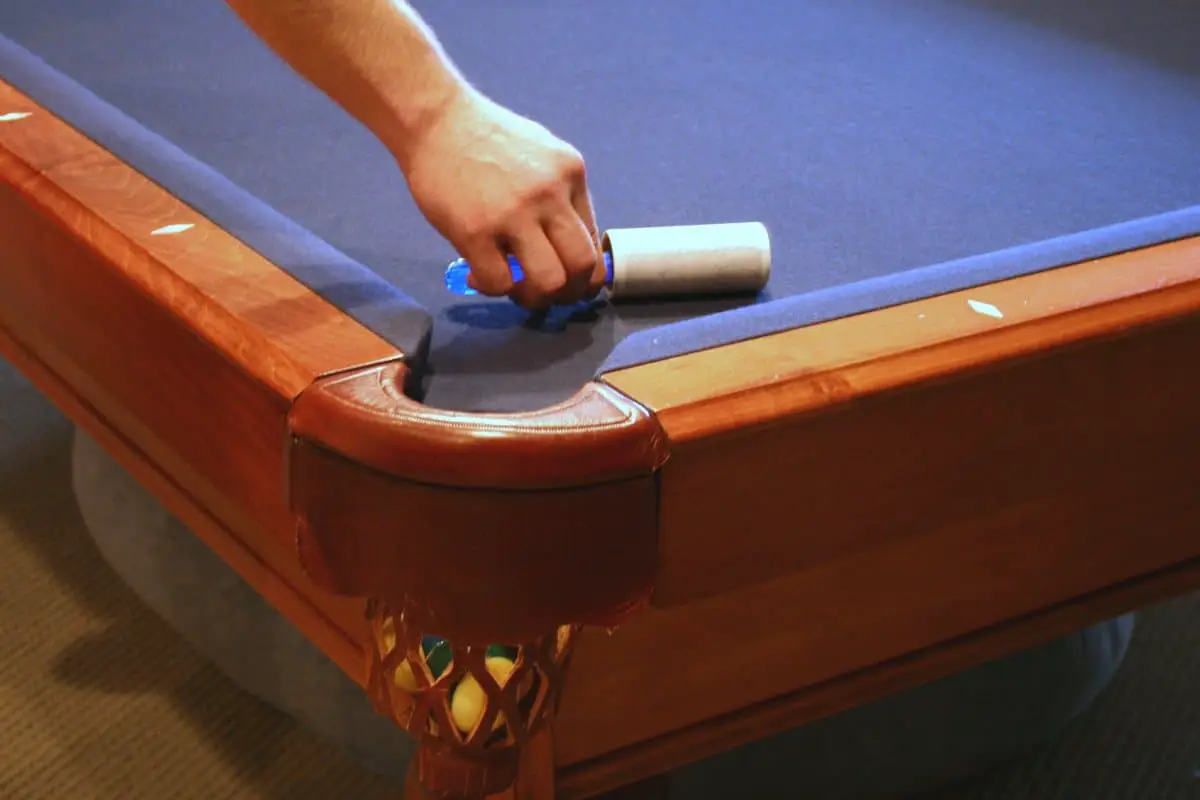How To Clean Pool Table Felt: A Step-by-Step Guide
Is your once-pristine pool table felt now marred by the telltale signs of countless games? Maintaining a clean pool table is essential not only for aesthetics but also for ensuring optimal gameplay, with a dirty table capable of disrupting the roll of the balls and diminishing the overall experience.
Chalk dust, the ubiquitous byproduct of every game, is the primary culprit behind a dirty pool table. Over time, this fine powder accumulates, altering the felt's color and creating friction that can impact ball movement. Moreover, accidental spills, such as those involving beverages, can leave stubborn stains that detract from the table's appearance and potentially damage the felt fibers. The good news is that with the right techniques and cleaning agents, you can restore your pool table to its former glory, ensuring many more hours of enjoyable gameplay.
Before delving into the cleaning process, it is imperative to gather the necessary supplies. This includes a dedicated pool table cleaner, a soft-bristled brush, a vacuum cleaner with a brush attachment, a clean cloth, and a mild detergent (optional). These tools will form the arsenal needed to effectively combat chalk dust, stains, and other debris that may accumulate on the felt surface.
The cornerstone of a clean pool table begins with removing any loose dirt and debris. Start by vacuuming the felt, using a brush attachment to gently lift and extract accumulated chalk dust, dirt, and other particles. Vacuum in the direction of the felt's nap, usually from the head spot towards the foot spot, ensuring thorough coverage across the entire playing surface. For stubborn chalk buildup, vacuum in multiple directions, and then finish with a final pass in the direction of the nap.
Following vacuuming, consider employing a pool table cleaner. These specialized products are designed to lift chalk marks and other foreign substances from the felt. To use a pool table cleaner effectively, spray it evenly across the table's surface, allowing the foam to rise. The foam acts as a solvent, encapsulating the chalk and lifting it from the felt. Once the foam has done its work, gently wipe it away with a clean cloth, revealing a clean, chalk-free playing surface.
For those seeking a more hands-on approach, or for tackling individual stains, a mild detergent and warm water solution can be used. Dampen a clean cloth with the solution and gently rub the stained area in a circular motion. Avoid applying excessive pressure, as this may damage the delicate felt fibers. Rinse the cloth frequently and ensure that the area is not overly saturated with water. After cleaning, allow the felt to air dry completely before resuming play.
In cases of stubborn stains, specialized pool table felt cleaners or stain removers can prove invaluable. These products are formulated to effectively tackle persistent marks, such as those from spilled drinks or other substances. Follow the manufacturer's instructions carefully, ensuring that the product is compatible with your table's felt type. As with any cleaning product, test in an inconspicuous area first to ensure that it does not cause discoloration or damage.
Another important aspect of pool table maintenance is recognizing when the felt needs replacement. While regular cleaning can extend the life of the felt, it will eventually wear down, becoming less responsive and prone to damage. Pool tables used in commercial settings, such as bars and public establishments, typically require felt replacement on an annual basis due to heavy use and exposure to spills and excess chalk. For home pool tables, the frequency of replacement depends on usage and care, but signs of wear and tear, such as fading, excessive pilling, or difficulty in ball rolling true, indicate the need for a change.
Regardless of the cleaning method employed, several precautions should be taken to protect the pool table felt. Avoid using harsh chemicals, abrasive cleaners, or excessive amounts of water, as these can damage the felt fibers and lead to discoloration. Always test any cleaning product in an inconspicuous area first to ensure compatibility. Regularly clean the table to prevent chalk dust and debris from accumulating. Promptly address spills to prevent staining.
Pool tables are more than just gaming surfaces; they are often the focal point of entertainment spaces. By implementing these cleaning and maintenance techniques, you can keep your pool table looking its best and providing years of enjoyment. Remember, a clean table equals a better playing experience. By investing a little time and effort in cleaning, you're not only preserving the table's appearance but also enhancing your game.
Here's a simplified guide on how to effectively clean your pool table felt:
- Clear the Table: Remove all balls, racks, and other accessories.
- Vacuum: Use a brush attachment to vacuum the felt, removing loose dust and debris.
- Apply Cleaner (Optional): If using a pool table cleaner, spray it evenly and let the foam rise. Wipe clean.
- Spot Clean (Optional): For stains, use a damp cloth with mild detergent, gently rubbing in a circular motion.
- Dry: Allow the felt to air dry completely.
In addition to routine cleaning, consider a deep cleaning of your pool table felt. This involves a more thorough approach to remove ingrained dirt and restore the felt to its original condition. Deep cleaning is especially recommended when the felt's color begins to change or when balls are no longer rolling true.
To deep clean pool table felt effectively, start by clearing and preparing the table, removing all balls, racks, and accessories. Next, vacuum the felt thoroughly to remove loose dirt and debris. Follow this by applying a specialized pool table felt cleaner, ensuring even coverage. Allow the cleaner to sit for the recommended time, allowing it to lift embedded dirt. Finally, use a clean, damp cloth to wipe the felt, removing any remaining cleaner residue. Allow the felt to dry completely before resuming play.
While the focus has been on cleaning and maintaining the felt, the condition of the pool table's other components also impacts the overall playing experience. Regularly inspect the cushions, pockets, and frame for any signs of wear and tear. Repair or replace any damaged components promptly. Properly maintained cushions ensure consistent ball rebound, while functional pockets prevent balls from getting stuck. Keeping all aspects of the table in good condition contributes to a more enjoyable and rewarding game.
Regularly assess the condition of your pool table felt. If the color is fading, there's excessive pilling, or the balls are not rolling true, it is time to replace the felt. The frequency of felt replacement varies based on usage and care. Public tables in bars or establishments typically need replacement annually. For home tables, regular cleaning and care can prolong the life of the felt.
When it comes to stain removal, acting quickly is key. Promptly address any spills or marks on the felt. Use a clean cloth and a mild detergent and water solution to gently blot the affected area. Avoid rubbing too hard, as this can damage the felt. Repeat the process until the stain lifts. Allow the area to air dry before resuming play. If the stain persists, try using specialized pool table felt cleaners.
For general maintenance, regularly dust the table with a soft brush to remove any surface dust. Dusting after each game prevents dust from accumulating and embedding itself in the felt. Also, consider using a table cover when the table is not in use. This protects the felt from dust, spills, and sunlight, extending its life. Ensure the pool table is kept in a climate-controlled environment to prevent damage from temperature and humidity fluctuations.
The best way to remove chalk marks from a pool table is to use a pool table cleaner. These cleaners are designed to lift chalk out of the felt. Alternatively, you can use a brush to remove chalk marks, but the cleaner is more time efficient.
When cleaning a pool table, the direction of the felt matters. Always brush or vacuum in the direction of the felt's nap. This ensures you're lifting dirt and dust without damaging the fibers.
If your pool table felt gets significantly dirty, a thorough deep clean is required. Remove all balls, racks, and accessories. Vacuum the felt to remove loose dirt and debris. Spray the surface with a pool table cleaner, allowing it to foam. Wipe the foam away with a clean cloth, leaving the felt clean and free of chalk.
One of the primary functions of the felt is to allow the balls to roll smoothly across the table. When the felt is dirty, the balls' movement can be affected. Proper cleaning is important, as the build up of dirt and chalk can cause the balls to be deflected and reduce the accuracy of shots.
Cleaning up the stains requires a gentle touch and gentle cleaning methods, such as a vinegar and water solution, to avoid damaging the felt. After all, you are trying to remove a fine powder from a smooth cloth, so dont overdo it. The cloth can also be wiped with a damp (not wet) clean towel.
Pool tables are a great addition to any home and provide great entertainment for people of all ages. But what do you do when your pool table gets dirty? Learn some tricks from the pros on how to clean and care for pool table cloth. So, here is what you need to know about cleaning pool table cloth: The first thing youll want to do is remove any chalk from the surface. You may read other help articles that suggest you vacuum your pool felt.
How often you need to clean your pool table felt depends on how often you use the table. For example, if you use the table for casual games with friends a few times a month, you may only need to clean it once every couple of months. However, if you use the table daily, you may need to clean it more frequently, like once a week. The cleaning frequency also depends on the type of use. For example, if you host a lot of parties on your pool table, it will need to be cleaned more often because of drinks being spilled and the use of more chalk.
Pool tables used in bars or other public establishments will need the felt changed on an annual basis due to spills and excess use of chalk that acts as an abrasive. These public tables almost never maintain clean, so a regular cleaning schedule is essential. If you do not have a cleaning schedule, you may have to change the felt even more frequently.
First you should try vacuuming with a bristle head attachment. You may have to go in several directions to get the chalk up but make sure to finish going head to toe (the direction you break in).
For removing stains, use a damp cloth (not wet) and a mild detergent. Gently rub the stain in a circular motion. Don't rub too hard. Alternatively, use a specialized pool table felt cleaner. After all, you are trying to remove a fine powder from a smooth cloth, so dont overdo it. The cloth can also be wiped with a damp (not wet) clean towel.



Detail Author:
- Name : Declan Quigley
- Email : fabian.brekke@abernathy.info
- Birthdate : 1977-10-13
- Address : 369 Kirstin Path Suite 889 Libbieton, NM 65966-8258
- Phone : +1-414-817-8810
- Company : Weber Ltd
- Job : Professional Photographer
- Bio : Maxime ipsam fuga harum consequuntur placeat dolorum. Odio quibusdam rerum repellat facere. Laborum aut praesentium aut explicabo. Tempora occaecati sunt cupiditate eum id.